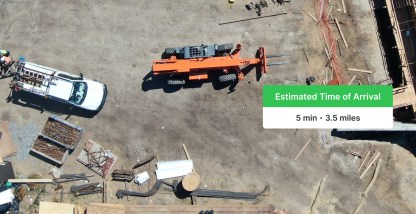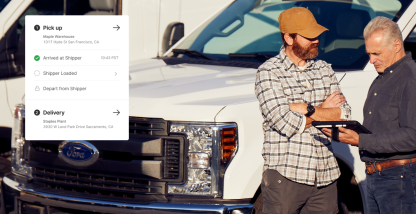Driving in snow presents a unique set of challenges for even the most experienced drivers, and we’ve all seen overconfidence lead to accidents that were preventable.
To put it mildly, we may all be experiencing some extra wintry weather this season, with a disrupted polar vortex and La Niña both expected to hit this year.
La Niña is a climate pattern where stronger than average trade winds, that blow from east to west, push warmer water toward Asia. This causes upwelling colder water on the coast of the western United States. The colder waters in the Pacific push the polar jet stream further south in the northeastern U.S., leading to colder and wetter winters from the Pacific Northwest to New England with above-average snowfall.
Along with the climatic upheaval, La Niña promises this season, you can add the predicted disruption in the polar vortex, which may bring an early taste of winter to most parts of the U.S.
A polar vortex is when arctic air is pushed farther south than normal, causing deep troughs and steep ridges in the polar jet stream. Strong polar vortex winds enclose a large pool of extremely cold air, and the stronger the winds, the more the air inside is isolated from warmer temperatures.
As La Niña and the polar vortex supercharge the winter weather headed your way this year, we thought we’d compile a guide for how to drive in snow, as well as other tips for winter driving safety, and how technology can help you stay safe this winter.
Read: 3 ways to coach drivers to safer behavior.
Why is winter driving a challenge?
Winter driving can be challenging. In fact, almost 40% of weather-related vehicle crashes occur during snowy or icy conditions, but let’s dig into why this is. As snow and ice accumulate on the roads, the friction between your tires and the pavement becomes compromised, making it hard for your vehicle to turn, speed up, slow down, and stop.
Other hazards that make winter driving a challenge include road signs covered by snow and snow banks that build up after snowplows clear roads, obstructing vision. Visibility is an obvious key to winter driving safety, so anything that impairs a driver’s vision should be avoided whenever possible.
Best ways to drive in the snow
When considering the best ways to drive in the snow, the better-safe-than-sorry rule applies in all cases. Whenever there’s an option for a safer route that promises to be more clear of snow, drivers should always take that route. When no alternate route is available, drivers should consider the following:
Give yourself extra time for your journeys
In inclement weather, you could encounter anything from traffic accidents to road closures. Make sure to give yourself plenty of extra time, and make sure to also consider that all drivers will be driving at a slower speed due to the conditions.
Plan routes effectively
If you know there’s a chance you could encounter snow or ice, plan ahead. It could save you a lot of frustration when it comes to alternate routes, parking, fueling up, and more. GPS systems, like the one Motive has, help drivers map smarter.
Set off in second gear
Traction control is hard in the snow. A lower gear not only keeps your vehicle moving slower, it gives the tires more power and more traction which is needed on slick roads.
Be gentle with the brakes
Any pressure on either pedal causes the weight of the vehicle to shift (brake pressure sends weight to the front, gas sends it to the rear). This can cause a dangerous loss of balance and control on ice, so you should use very little pressure on either pedal. You should also always brake early.
Leave room between other cars
Make sure you’re leaving plenty of room between you and the vehicle in front of you. A good rule of thumb is to leave at least a quarter of a mile between other cars. Then, if someone ahead of you suddenly brakes or hits some patchy ice and starts sliding, you have time to react. Slowly move over, careful not to jerk the steering wheel, and go around them if necessary.
Use a low gear downhill and avoid braking
Traction control in snow is key. Use a low gear for going downhill and try to avoid braking unless absolutely necessary. Watch your RPMs as well when going uphill. Do what you can to keep them down, which will help prevent torque. Too much torque will increase your chances of spinning out and losing control.
Tips for driving a commercial vehicle in snow
As with driving in snow in any other vehicle, anyone driving a truck in snow should always consider taking any route that avoids snow first. When no such route is available, consider these tips for driving a truck in snow:
Assess the weather properly
An app like the Weather Channel App is an excellent tool for making sure you have the most up-to-date weather forecast. Complete fleet management solutions like Motive also help drivers combat any potential weather delays. Your CB radio is also a great tool when driving in snow and hazardous weather conditions. Communicate with other drivers to find out what kind of road conditions you can expect, where to pull over, and other necessary information for winter driving safety.
Be careful when doing vehicle checks
Your vehicle inspections are your first line of defense when driving in snow. If it doesn’t already, make sure your vehicle checklist includes all of these items:
Brake lights and tail lights: These should be visible and functioning correctly.
- Air tanks: Manually drain them to prevent moisture buildup in the air system.
- Mirrors: Make sure they’re clean and in the correct positions.
- Radiator: There should be proper winter coolant and no leaks.
- Tires: Winter roads provide very little traction, so be sure you have good tread depth.
- Heater, defroster, and wiper blades: Make sure you can keep the windshield clear in the event of heavy snow, sleet, or hail storm.
- Battery: Cold weather lowers battery power — make sure yours is in good shape.
- Fifth wheel lubrication: Use a winter-grade lubricant, because a summer-grade lubricant could cause steering issues in low temperatures.
Using technology for complete fuel and maintenance management, including things like regular maintenance reminders and engine fault code alerts, can be invaluable when it comes to maintaining your vehicle.
Maximize any distance
It’s essential to maximize distance between yourself and those you’re following on the road. This seems like a basic rule, but its importance can’t be emphasized enough. This winter driving safety tip alone could be the difference between having enough time to respond to a safety hazard and not. Observe the quarter-mile rule when assessing how much distance to put between yourself and other drivers.
Keep supplies in your commercial vehicle
When in doubt on whether or not you’re prepared to face driving in snow, double check that you have these 10 items in your truck:
- Blanket and extra clothing: If you’re stuck with a truck that won’t start and have to wait in the cold for assistance, you’ll want a warm blanket as an extra layer. Pack extra clothing including a warm coat, snow boots, hats, gloves, socks, etc. An extra coat and gloves means you can swap them out if you get wet.
- Flashlight with extra batteries: Keep a good-sized, water-proof flashlight with fresh batteries in case your breakdown is during the night. You can also pack some light sticks. These can be used to help provide additional visibility for the cabin or used outside while working (if you have to shovel around the wheels, for instance).
- Snow shovel: Get a short-handled shovel to stow in storage in case you need to remove snow from around the wheels of your vehicle. Plastic shovels will work but are prone to breaking. You may opt for metal in case you also need to chip at ice or compacted snow.
- Bag of sand or cat litter: If you get stuck, use these items under the wheels. Warm tires can turn that snow you parked on into a patch of ice in a short time. Throwing sand or litter under your tires is a good and environmentally safe way to absorb moisture and provide that extra traction needed to get you going.
- Tire chains and traction mats: Tire chains are designed to bite through the snowy crust or into an icy road surface to get a solid grip on the road underneath. Traction mats provide extra traction for tires and prevent vehicles from spinning in harsh conditions.
- Windshield washer fluid and scraper: It’s important to have items to help clear your windows for vision.
- Water and non-perishable food: Plan ahead to make sure you have enough food, such as protein bars, to last in an emergency situation.
- First aid kit: Grabbing a first aid kit would be helpful for any minor incidents. It’s also good practice to add hand and feet warmers in your kit in case you go for a prolonged period of time without heat.
- Basic tool kit: Bring a tool kit with wrenches, sockets, screwdrivers, a hammer, pliers, duct tape, zip ties, bungee cords, heavy-duty tow straps, and any other tool you might use. Flares should be available in your truck during all seasons in case your truck is pulled over in distress.
- Portable cell phone charger: Even a cheap portable charger will help in case your phone dies and you don’t have a way to charge it.
Tips for driving a bus in the snow
Buses are no exception when it comes to maintaining winter driving safety. Because buses often contain passengers, there’s more to consider when it comes to ensuring everyone on board is as safe as possible. Use these tips for driving a bus in the snow:
- Drive slowly and leave a greater vehicle following distance.
- Gear down while stopping and accelerate slowly to ease out of a patch of ice or snow.
- If you get stuck in deep snow, don’t spin your wheels. Instead, move them from side to side to push the snow away and pack it down.
- During heavy storms with low visibility, occasionally pull over and wipe off your headlights, stoplights, and taillights so that other vehicles can see you.
- Beware of low underpasses in the winter, as ice or packed snow accumulated on the road could increase your vehicle’s clearance height.
What to do if you get stuck driving in snow
If you happen to be driving and get stuck in snow, there are a few things you can do. First, assess how you’re stuck. Are you stuck in deep snow or on ice? If you’re stuck in snow, you can first try shoveling by the wheelbase to remove any buildup of snow. If you’re stuck on ice, you can dump cat litter or sand around where you just shoveled. This will help with traction for the wheels. You can also try a traction mat, sticking the mat right up to the wheels.
Make sure you’re wearing enough winter clothing and have gloves on. Once you’re out of the snow or ice, consider using tire chains so you don’t get stuck again.
How to keep safe in winter with Motive
When it comes to winter-proofing your fleet, you want to make sure you’re taking all the steps necessary to stay as productive as possible during the winter months. Motive offers comprehensive fleet safety solutions for enhanced road and driver safety, including our AI Dashcam, which stops accidents and detects unsafe driving with:
- Real-time alerting that detects unsafe driving and instantly alerts drivers.
- Automated post-trip coaching that includes a contextualized video for clear visual examples for drivers.
- HD video evidence to help avoid third-party liability and prove driver innocence.
When it comes to navigating weather conditions, Motive’s GPS solution layers weather tracking into driving maps, helping drivers reroute or plan for delays when necessary.
To learn more about how you can use Motive to maintain fleet safety in winter and any other conditions, request a demo.









